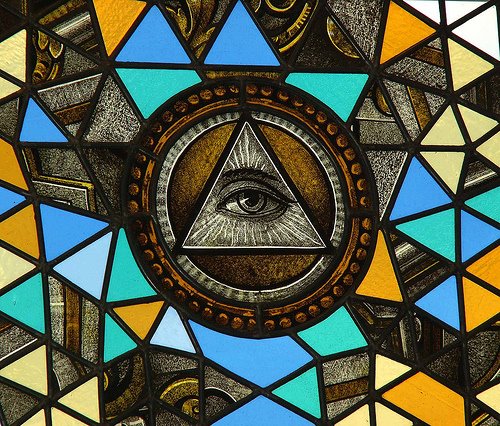In my last post, I finished up like this: "Magic, in the sense that I want to talk about it means the art of understanding and manipulating the relationship between perception and reality."
There's a sentence that needs unpacking, if ever I saw one. I'll start with the second half first - the relationship between perception and reality.
It's not too hard to accept, if you look at it rationally, that there's a gulf between objective reality* and our perception of it. Starting at the most basic level, our senses are attuned to a very specific (and, cosmically speaking, quite small) spectrum of data: we can only hear at best between 20 Hz and 20,000 Hz** (and this degrades as we age); we can see only a small range of the available radiation spectrum (visible light) and feel only a tiny range outside that (heat); our chemical sensitivity (taste and smell) is negligible compared to many other species; and because we lack whiskers or electrical sensing mechanisms, our sense of touch pretty much ends at our skins.
On top of this, our brains only have a limited "pool" of processing power to apply to the task of processing and sorting the sensory information that's available - and it's the same pool of processing power it uses for thinking and telling the body to execute voluntary movements. To save time and power, we have a bunch of cognitive shortcuts or "filters" in place to fit incoming data to pre-determined patterns and interpret it in light of pre-determined principles.
For example, if you look at this:
...you probably don't need to stop and figure out what that particular arrangement of wooden pieces is for. You see a shape that corresponds to the label "chair" and your pre-existing filters helpfully fill in all of the information you might need about what a chair is, what it's for and any particularly potent memories you might have related to chairs in general or chairs of this general design in particular.
This is a mostly-good-enough solution. It does save time and energy and vastly improve our survival rates*** but that doesn't really change the fact that most of what you see when you look at the picture above is not the chair-that-you-see, but rather your ideas-about-chairs made manifest.
Most people probably don't feel especially strongly about chairs, but if you did, you can see how easy it would be for your ideas-about-chairs to be strongly coloured by that depth of feeling. in fact (because ideas are sticky, and tend to cohere to one another in strange ways) chairs might become a symbol for you of all of those strong feelings.
Magic operates in this space of "ideas-about-things" and the feelings and sub-concepts that attach to those ideas.
*Assuming there is such a thing - but that's an argument for another time...
** This is less than it sounds like, because an octave is double the original frequency - so from concert A to the next one is a gap of 440 Hz, while the gap to the next A up the scale is 880 and the one after that is 1760 (and so on and so forth).
*** You don't need to stop and think to decide that stepping out of the way of a bus is a good idea, for example.


Right. So one of the arguments that the Situationists put forward (if i understand it)is that the habits of mind become so strongly ingrained that we cease to see the original object in any meaningful way. Then we are living in a world that consists entirely of these symbols, totally abstracted from the material world.
ReplyDeleteSeems to me that the magics that fit the definition above are the ones appropriate to use on the modern mind.
Quite! And that's where I'll be going next time I get enough free time in front of a screen to type it up...
Delete